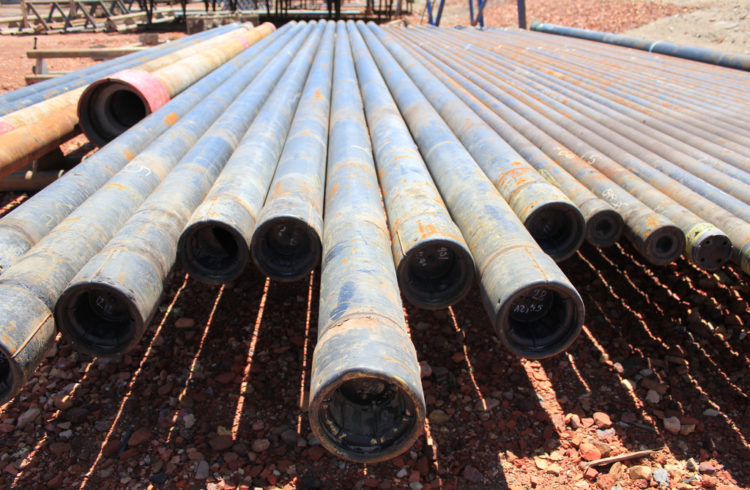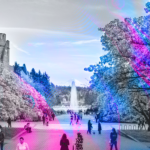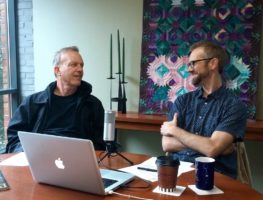The origin of the American Thanksgiving is attributed to a harvest feast held in 1621 in Massachusetts with the Wampanoag Indians and the Plymouth colonists.[1] Part of the story-telling of the ‘first’ feast is the recognition that without the help of Native Americans the early settlers would not have made it. The celebration is linked to the role Native Americans played in a romanticized U.S. story. What is omitted from the story’s re-telling is how the white settlers and the U.S. government went on to systematically displace, kill, and destroy Native American peoples, their cultures and their lands.
Thanksgiving and Truth-Telling
So though we celebrate the bounty of this country, we should also remember with humility the destruction of Native peoples by the white colonizers who took their lands for themselves. Referring to Native Americans as ‘First Nations’ people causes us to reflect on their pride of place in the American story. It also requires us to tell the truth about the white colonizers’ role in their attempted destruction of a peoples already here.
To tell the truth means telling the story of how this betrayal is on-going today. The story today is the Dakota Access Pipeline. The story illustrates again the tendency of big business interests to supersede the treaties and interests of First Nations people. The rift, largely unreported by major news stations, is between First Nations people and big business goals, between the care of the land and economic expediency for oil, and between preserving the dignity of sacred places to bulldozing madness. To tell the truth of Thanksgiving means telling the story of how betrayal is on-going today. Click To Tweet
Why is the Dakota Pipeline Controversial?
The Dakota Access Pipeline is a $4 billion project to create a 1,172 mile long underground pipeline that would daily carry over 450,000 barrels of hydrofracked crude oil from the North Dakota oil fields, through North and South Dakota and Iowa, to end up in Pakota, Illinois for refinement. The pipeline has been highly controversial because of its potential for harm to the environment including land and water systems as it would go underneath the Missouri and Mississippi Rivers.
Beginning in the spring of 2016 several Dakota and Iowan tribes, including the Sioux and Meswaki and hundreds of other volunteers from all over the country, have protested the pipeline because of its infringement on Native American sacred grounds and its risk to the water supply of the Standing Rock Indian Reservation. The protestors refer to themselves as ‘protectors.’ They are protecting the land, water, and heritage of the Standing Rock Sioux. They are determined to use peaceful means.
Some of the facts:
- The Army Corps of Engineers fast tracked an environmental impact study deeming it safe to lay the pipe, until the Standing Rock Sioux Tribe filed a suit against the Corps requiring a more thorough study. The Army Corps are working on that study, but the development of the pipeline continues.
- The Department of Justice and the Army Corps of Engineers ordered the pipeline owners not to drill within 20 miles of the river. Drone footage shows that behind police barriers the work has continued day and night, and the company is now ½ mile from the river and developing a drilling platform.
- The pipeline was first proposed to pass near Bismarck, North Dakota. The people of Bismarck protested, and so the pipeline was moved to go through the Reservation under a lake which is their primary water source.
- Construction workers bulldozed a historic sacred site. When protectors protested, attack dogs were let loose and pepper sprayed was used directly into protectors’ eyes. Several people were bit.[2]
- Heavily armed police in full riot gear have shot rubber bullets at peaceful protestors while snipers have trained guns on them from nearby hills. The protectors have not used force except the power of their voices and their presence.
- On November 22nd the police used water cannons during freezing temperatures and percussion grenades. A 21 year old woman was hit by a grenade, and her arm was badly mangled. She is in a hospital undergoing several reparative surgeries. Others were also hurt. An access road to a nearby hospital has been blocked by the police requiring an hour long trip around the area to get medical care.[3]
- The construction workers and police continue to shoot down drones which are monitoring the protectors and the construction of the pipeline. If everything happening – engagement with the protectors and the construction of the pipeline – is legal, why are the drones shot down?
The lands of America had a history, cultures and many peoples before white colonists arrived. Yet from the beginning of the ‘colonization’ of America, white Christians with force made it a priority to acquire the lands for themselves and to establish the white Christian culture as superior in every way. So the white man’s agenda took precedence over all other interests and any perceived threat was dealt with swiftly and forcefully. The Dakota Protectors are a present day testimony to the on-going story of force used to supersede the rights of others.
Consequentialism and Christ
In Ethics this type of thinking is called ‘consequentialism.’ Consequentialism means that if you perceive the end to be morally good, then how you get there is not of consequence. The outcome for ‘good’ is of primary consequence. This leads to the well-known phrase ‘the end justifies the means,’ and this has been used to explain everything from the religious leaders’ crucifixion of Jesus, an innocent man, to the construction of the Dakota Access Pipeline.
So are Christ-followers consequentialists? What is the responsibility of white Christians towards the concerns of First Nations peoples in the Dakotas and Iowa? Should this be left to business owners and politicians and the courts to settle? The opposite of consequentialism is deontology which puts character and moral behavior at the center of ethics, rather than the ‘good’ outcomes. Jesus modeled for us a character and a behavior shaped to love rather than to gain. What is the responsibility of white Christians towards the concerns of First Nations peoples? Click To Tweet
Therefore, whenever persons in power displace, silence, dismiss, ignore, jail, or hurt others because the ‘others’ are disrupting their agenda, then we Christ-followers should become the protectors. Our silence is our complicity with the business owners.
Our character is to be like Christ’s character. Our concerns are to be like Christ’s concerns. Our prayers and our actions are for the fulfillment of God’s peaceable kingdom, not an economic one. Consider this Thanksgiving and holiday season adding your voice to the voices of the First Nation Protectors.[4]
[1] Scholars recognize that other competing stories exist about which harvest feast was the ‘first’ one.
[2] Footage of these events are available on YouTube. Search for ‘Dakota Pipeline Protest.’
[3] See interviews on NPR which has faithfully covered the Dakota Access Protest.
[4] An online article with 5 ways to support the Protectors: https://www.bustle.com/articles/196566-support-the-dakota-pipeline-protests-this-thanksgiving-in-5-ways







Missio Alliance Comment Policy
The Missio Alliance Writing Collectives exist as a ministry of writing to resource theological practitioners for mission. From our Leading Voices to our regular Writing Team and those invited to publish with us as Community Voices, we are creating a space for thoughtful engagement of critical issues and questions facing the North American Church in God’s mission. This sort of thoughtful engagement is something that we seek to engender not only in our publishing, but in conversations that unfold as a result in the comment section of our articles.
Unfortunately, because of the relational distance introduced by online communication, “thoughtful engagement” and “comment sections” seldom go hand in hand. At the same time, censorship of comments by those who disagree with points made by authors, whose anger or limited perspective taints their words, or who simply feel the need to express their own opinion on a topic without any meaningful engagement with the article or comment in question can mask an important window into the true state of Christian discourse. As such, Missio Alliance sets forth the following suggestions for those who wish to engage in conversation around our writing:
1. Seek to understand the author’s intent.
If you disagree with something the an author said, consider framing your response as, “I hear you as saying _________. Am I understanding you correctly? If so, here’s why I disagree. _____________.
2. Seek to make your own voice heard.
We deeply desire and value the voice and perspective of our readers. However you may react to an article we publish or a fellow commenter, we encourage you to set forth that reaction is the most constructive way possible. Use your voice and perspective to move conversation forward rather than shut it down.
3. Share your story.
One of our favorite tenants is that “an enemy is someone whose story we haven’t heard.” Very often disagreements and rants are the result of people talking past rather than to one another. Everyone’s perspective is intimately bound up with their own stories – their contexts and experiences. We encourage you to couch your comments in whatever aspect of your own story might help others understand where you are coming from.
In view of those suggestions for shaping conversation on our site and in an effort to curate a hospitable space of open conversation, Missio Alliance may delete comments and/or ban users who show no regard for constructive engagement, especially those whose comments are easily construed as trolling, threatening, or abusive.